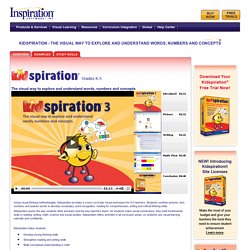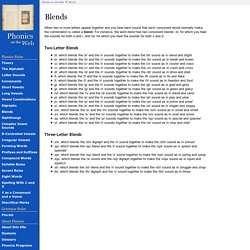

Mmora24. Develop elementary reading comprehension, writing and math skills with Kidspiration® Using visual thinking methodologies, Kidspiration provides a cross-curricular visual workspace for K-5 learners.

Students combine pictures, text, numbers and spoken words to develop vocabulary, word recognition, reading for comprehension, writing and critical thinking skills. Kidspiration works the way students think and learn and the way teachers teach. As students make visual connections, they build fundamental skills in reading, writing, math, science and social studies. Kidspiration offers activities in all curriculum areas, so students use visual learning naturally and confidently. Kidspiration helps students: Develop strong thinking skills Strengthen reading and writing skills Build conceptual understanding in math Develop Strong Thinking Skills With Kidspiration, students use graphic organizers to express thoughts and explore ideas and relationships.
Symbol Maker sparks creativity and anchors meaning. Develop elementary reading comprehension, writing and math skills with Kidspiration®
Recurrent Middle Ear Infections Can Have A Major Impact On Children's Development. A study by the University of Western Sydney has revealed that recurring middle ear infections in early childhood can have a detrimental impact on language and literacy skill development in later life. Study author, Dr Heather Winskel, from the University's School of Psychology, says middle ear infection or otitis media (OM) is the most common childhood illness.
"At least 70% of children are likely to experience at least one episode of otitis media before they are three-years-old and for many children it is a recurrent problem," says Dr Winskel. "The peak incidence of OM occurs when children are between 6 and 18 months, which is the most critical period of language development, when the infant is tuning in to the speech sounds that characterise their native language. This process allows young children to break into the stream of speech and eventually map sound onto meaning. "Extensive research has indicated that phonological awareness is a necessary skill children need to begin reading. Auditory Dyslexia. Auditory Dyslexia (Click Here to Listen to this Article) Even though the first diagnosed case of dyslexia was discovered in 1896, many many people go their entire lives or a good portion thereof with learning disabilities that go undiagnosed as dyslexia.
As much as 80% of all learning disabilities are really dyslexia. Reading and writing are not the only abilities that can be affected by dyslexia although many forms of the disorder are first manifested in those areas. Auditory (or dysphonetic) dyslexia is one of many subtypes of the learning disability that is probably not what most people think of when they think of dyslexia.
We have all been told at one time or another by our parents, grandparents, significant others, or children that we “just don’t listen”. If you say the word dyslexia, many people think of backwards letters or words, or mixed up words in a sentence. Auditory Dyslexia. Auditory dyslexia is a disability that affects an individual's hearing ability. A striking disparity exists between hearing and listening where the latter implies the method of transmitting sounds to the brain while the decoding process of the sounds and making them sound sensible is termed as hearing. It is believed that this form of dyslexia affects the latter type. Hearing is the ability of the inner ear to pick up sound vibrations that gets registered in the brain. Research studies of the brain has shown that normal readers process the written word in the back portion of the brain which blends letters with sounds while a dyslexic brain processes writing in the frontal part of the brain, the segment that is generally associated with speech.
Headsprout Reading Online - Kindergarten to 5th Grade. Learn To Read. ABC Reading Eggs. Blends (Phonics on the Web) When two or more letters appear together and you hear each sound that each consonant would normally make, the combination is called a blend.

For instance, the word blend has two consonant blends: bl, for which you hear the sounds for both b and l, and nd, for which you hear the sounds for both n and d. Two-Letter Blends Three-Letter Blends. Dorling Kindersley: Series - DK Readers. Educational Software for Kids & Adults with FREE Shipping & Discount Prices. JumpStart 3D Virtual World - adventure based learning for kids.
Reader Rabbit.